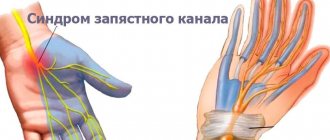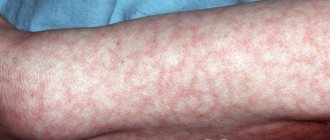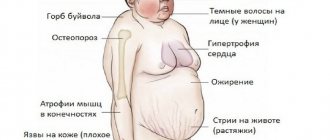Restless legs syndrome (RLS) is a severe neurological disorder characterized by discomfort and pain in the legs that occurs at night and disrupts the patient's sleep. Patients complain of itching, burning and a sensation of “pins and needles” on the skin. Unpleasant symptoms force them to constantly move their legs, which brings only short-term relief. Episodes of involuntary motor activity over time lead to insomnia, depression and serious discomfort for the patient. RLS is considered the cause of insomia in 15% of cases. That is why this disease is an urgent problem of modern medicine.
Pathology was discovered in 1672 by a physician from England, Thomas Willis. Swedish neurologist Carl Ekbom described in detail the features of the syndrome in the middle of the last century. Thanks to the developments of these scientists, the disease has the corresponding names - “Ekbom syndrome” and “Willis disease”. The pathology occurs in mature and elderly people, predominantly female. This fact is explained by the stronger nervous system of men. The disease develops extremely rarely in children.
The immediate cause of RLS remains unknown in most cases. Despite the fact that the disease has been discovered for a long time, its etiopathogenetic mechanisms are currently not fully understood. Usually the syndrome occurs independently and spontaneously. Patients rarely go to the doctor, attributing unpleasant symptoms to banal leg fatigue. Some pathologies and special conditions of the body can provoke the appearance of this neurological sensorimotor disorder - persistent kidney dysfunction, pregnancy, iron deficiency anemia.
Because RLS presents with nonspecific symptoms, it is difficult to diagnose. Specialists make a diagnosis taking into account the patient’s clinical signs and complaints, the results of a neurological examination, polysomnography data and other laboratory and instrumental studies. Treatment of the pathology is conservative, including medication and physiotherapy.
What it is?
Restless legs syndrome (RLS) is a condition characterized by unpleasant sensations in the lower extremities that appear at rest (usually in the evening and at night), force the patient to make movements that relieve them and often lead to sleep disturbances.
Current population studies indicate that the prevalence of RLS is 2–10%. RLS occurs in all age groups, but is more common in middle and old age. RLS is the cause of approximately 15% of cases of chronic insomnia - insomnia.
General information about the disease
Humanity has been familiar with this disease for a long time. Information about it first appeared in 1672, described by Thomas Willis, and was explored more deeply by the Swede Ekbom in the mid-20th century. Therefore, restless legs syndrome (RLS) is called by their names: Willis disease, Ekbom disease.
The disease is characterized by extremely uncomfortable sensations in the legs. They appear in the evening before bed, disappear in the morning and do not bother you in the first half of the day. Tired leg syndrome is one of the causes of insomnia.
Restless limb syndrome can also occur during daytime sleep, when you just lay down to rest. A person experiences suffering without pain - this is the hallmark of RLS.
This disease is detected in 10% of the world's population.
It is more often found in older people (35-70 years). The female population suffers from RLS more often. It can also be diagnosed in children . This is often associated with the child's hyperactivity and lack of attention. This is only a hypothesis, not confirmed by anything. Advertising MEDICINETEASER
Causes
Primary syndrome is poorly studied and affects young people under 30 years of age. Not associated with major diseases, it accounts for up to 50%. Accompanies a person throughout his life, alternating periods of progression and remission. Occurs suddenly, the reasons are not clear, it may be:
- heredity in 20-70% of cases;
- disturbances in the functioning of the central nervous system;
- psychological circumstances (stress, depression, fatigue).
Secondary syndrome - manifests itself against the background of a primary (neurological or somatic) disease, disappears after their elimination. Frequently encountered:
- disruption of blood supply;
- kidney diseases, arthritis;
- vitamin deficiency (group B) and magnesium deficiency;
- anemia due to iron deficiency;
- diabetes mellitus, thyroid diseases;
- abuse of alcohol, tobacco, caffeine;
- treatment with certain medications.
Secondary syndrome occurs after 40 years of age or later. The exception is pregnancy. More than 16% of pregnant women suffer from this disease, 3 times more than non-pregnant women. There is a possibility of genetic transmission of RLS from mother to fetus, which poses a threat to pregnancy.
Causes
Primary or idiopathic RLS occurs without cause, while patients do not have any psychosomatic pathologies. This is the most common form of the disease, clinical signs of which first appear in patients aged 20-30 years. Modern scientists have proven that idiopathic syndrome develops in individuals with a hereditary predisposition under the influence of external provoking factors. Familial forms are associated with chromosomal abnormalities. The disease is inherited according to an autosomal dominant principle, occurs suddenly, is not completely curable and occurs with periods of exacerbation and remission. The first manifestations of the syndrome can be provoked by stress, outbursts of emotions, anxiety, and psychological trauma.
The causes of secondary RLS are pathological processes occurring in the body:
- Metabolic and endocrine disorders - hypovitaminosis B, deficiency of certain microelements, amyloidosis, diabetes mellitus, thyrotoxicosis, obesity,
- Diseases of the peripheral nervous system - polyneuropathy, myelopathy, myelitis,
- Persistent kidney dysfunction leading to uremia
- Vascular diseases - atherosclerosis of the vessels of the legs, varicose veins in the legs,
- Condition after gastric surgery,
- Alcoholism,
- Systemic diseases - rheumatism, multiple sclerosis.
In the second and third trimester of pregnancy, symptomatic RLS develops in 20% of cases.
Symptoms of the pathology disappear after childbirth, but sometimes the process becomes protracted. Signs of RLS sometimes appear in healthy individuals after severe mental stress, intense physical activity, or excessive intake of caffeinated drinks. Often, symptoms of the pathology occur in people who have been taking antidepressants, anticonvulsants, desensitizing drugs, antiemetics and antihypertensives for a long time. The manifestation of the secondary syndrome occurs in the mature age of patients - 40-50 years. The disease is steadily progressing, and the intensity of painful and uncomfortable sensations in the legs is constantly growing. If the disease that causes the syndrome is not treated, severe consequences for the body will develop.
Pathogenesis
The effectiveness of dopaminergic drugs and the possibility of worsening symptoms under the influence of antipsychotics indicate that a key element in the pathogenesis of RLS is a defect in dopaminergic systems. The clear daily rhythm of clinical manifestations of RLS may reflect the involvement of hypothalamic structures, in particular the suprachiasmatic nucleus, which regulates the daily cycles of physiological processes in the body.
It is possible that in some patients with RLS, polyneuropathy, iron deficiency, coffee abuse or other factors only reveal an existing hereditary predisposition, which partly blurs the line between idiopathic and symptomatic variants of RLS.
Causes: why restless legs syndrome develops
Restless legs syndrome can manifest itself at different ages, so it can be divided into three types:
Childhood - may appear during puberty, when the body experiences a hormonal surge and intensive growth occurs.
RLS in pregnant women is observed in the third trimester and does not require treatment, as it goes away immediately after childbirth. About 30% of expectant mothers complain about it. If the disease is caused by pathologies, it can be inherited by the baby. It is for this reason that you need to consult a doctor.
Idiopathic. Occurs in patients under 30 years of age. This is the primary form of the disease, which is caused by genes inherited from the parents. Unlike the secondary form, it is not caused by any adverse factors or neurological problems.
There are a number of factors that contribute to the development of Willis disease. These include:
- Heredity. 50% of patients suffering from RLS have relatives with the same diagnosis.
- Gender. Due to high hormone levels and greater exposure to stress, women are diagnosed with RLS more often.
- Micronutrient deficiency. A lack of magnesium, potassium, and folic acid in the body can cause seizures or Willis disease.
- Phlebeurysm. In 98% of cases, patients suffering from varicose veins and RLS feel significant relief after vein sclerosis surgery. Their number of attacks is significantly reduced, and in some cases they stop.
- Chronic lung or kidney diseases. This category includes diseases that are associated with electrolyte imbalance.
- Cognitive disorders. Occurs in older people (over 65 years of age). These include dementia, Alzheimer's disease, and Parkinson's disease.
- The use of hormonal drugs with estrogen. This category includes contraceptives and hormones that are prescribed during menopause.
- Diabetes mellitus and autoimmune disorders. This category of diseases can cause kidney problems, anemia, or neurological diseases.
- Attention deficit disorder. Especially if it is accompanied by hyperactivity, it can occur in both children and adults with RLS.
Symptoms of RLS
The symptom is characterized by the occurrence of unpleasant sensations of a piercing, scraping, itching, pressing or bursting nature in the lower extremities. The manifestation of symptoms mainly occurs at rest; with physical activity they are significantly reduced.
To alleviate the condition, patients resort to various manipulations - stretching and bending, massaging, shaking and rubbing their limbs; during sleep they often toss and turn, get out of bed and walk from side to side, or shift from foot to foot. This activity helps stop the symptoms of restless legs syndrome, but as soon as the patient goes back to sleep, or simply stops, they return. A characteristic feature of the syndrome is the manifestation of symptoms at the same time, on average it reaches its maximum severity in the period from 12 am to 4 am, the minimum occurs from 6 to 10 am.
In advanced cases, with prolonged absence of treatment, the daily rhythm of restless legs syndrome disappears, symptoms appear at any time, even while sitting. This situation significantly complicates the patient’s life - it is difficult for him to withstand long trips in transport, work at the computer, attend cinemas, theaters, etc.
Due to the need to constantly move during sleep, over time, the patient begins to experience insomnia, which leads to rapid fatigue and drowsiness during the daytime.
Symptoms
Restless legs syndrome is distinguished by characteristic clinical features - sensory and motor. They are usually bilateral, less often asymmetrical. There are no unpleasant symptoms of the disease in the morning until noon. Towards evening, the patients' condition worsens. An exacerbation of the syndrome is observed from midnight to dawn. In severe cases, symptoms occur around the clock, not only while lying down, but also while sitting. Persons with the syndrome cannot stay in transport for a long time, work at a computer, or go to the movies.
localization of RLS lesions
- Patients experience burning, itching, trembling, bursting, squeezing and cutting pain in the legs. They claim to feel muscles moving and twitching. The intensity of the discomfort varies and reaches acute pain during an attack. For some, trembling in the thighs is quickly replaced by tingling in the feet, for others, the entire limb “cramps” from pain. The location of pain is usually the legs and feet. The inconsistent and wave-like nature of discomfort is characteristic of RLS. Attacks occur at night, immediately upon falling asleep. Any movement of the legs helps relieve pain. When the patient falls asleep, the pain returns with renewed vigor.
- Paresthesia and other sensory disturbances are also basic to this disease. Patients complain of a feeling of numbness, pressure, goosebumps crawling on the skin, a feeling as if “someone is scratching.” These symptoms burden patients and cause them discomfort. Paresthesia usually occurs on the legs, feet, and as the disease progresses, they cover the thighs, arms, and perineum. When patients' entire torso becomes numb, the sensations become simply unbearable. Sensory disturbances appear half an hour after a person goes to rest. It is possible that they appear earlier and even appear during the day. Paresthesia, like pain, disappears when moving the legs, walking, or self-massage. The condition is alleviated by increasing the activity of blood flow.
- Involuntary leg movements during sleep last on average 5 – 40 seconds. As the pathology progresses, neuropathic rhythmic movements persist throughout the night. Patients bend and straighten their fingers, spread them apart, and rotate their feet. Seriously ill patients bend their knees. Motor episodes occur repeatedly at night and awaken patients.
- Insomnia is the result of unpleasant sensations in the legs at night. Patients sleep restlessly, waking up every 2-3 hours, or do not sleep at all. Over time, chronic insomia develops, manifested by weakness after sleep. Patients' ability to work is reduced, concentration is impaired, and fatigue occurs. They become irritable, emotionally unstable, and quick-tempered. Many people become depressed or neurasthenic.
All symptoms of RLS are subjective. In patients with the idiopathic form of the pathology, there are no disturbances in the neurological status: they do not exhibit focal and general cerebral symptoms, pathological reflexes and other changes. In the secondary form, which is a manifestation of a neurological disease, characteristic disorders of the nervous system appear, which allow a preliminary diagnosis to be made.
CNS control of movement coordination
The syndrome rarely occurs in children. It also manifests itself as pain in the legs. The cause of the pathology is a mental disorder caused by a lack of proper attention from parents to the child. Daytime hyperactivity is another cause of the syndrome. Modern medical scientists cannot determine exactly how and why the disease develops, but they argue that the problem cannot be solved without treatment.
Diagnostics
Basic diagnostic methods:
- Blood test for iron, magnesium and folic acid levels. Helps to determine the deficiency of the listed elements, which may be provoking factors of pathology.
- Electroneuromyography is a method of studying nerves and muscles using special equipment. In this case, sensitive sensors are attached to different parts of the body and diagnose the degree of electrical excitability of a particular muscle group.
- Polymonography is a comprehensive approach that allows you to diagnose motor activity during sleep. Special sensors record awakenings and muscle activity. Unlike electroneuromyography, the person is in a sleeping state.
Diagnosis of the disease
It is worth noting that, despite its prevalence, the diagnosis of “restless legs syndrome” (the causes and treatment are described in the article) is not given to every patient with characteristic symptoms. The problem is the difficulty of diagnosing the disease. The correct conclusion is made only in 8–10%; in other cases, patients are treated for neurological pathologies. If insomnia occurs due to discomfort in the legs before going to bed, it is important to contact a highly qualified specialist - a somnologist. Somnology studies specifically sleep disorders, so the doctor will be able not only to determine the root cause of insomnia, but will also prescribe related examinations from other specialists, which is not always done, for example, by a neurologist.
It is important to collect a family history before making a diagnosis. If a factor of chronic insomnia is identified among close relatives of the patient, there is a high probability of an idiopathic form of the disease caused by a hereditary predisposition. In this case, a geneticist will be involved in making a diagnosis.
Women with characteristic symptoms take a pregnancy test, since hormonal changes in the body are often the cause of the problem.
Patients are prescribed blood tests to detect a lack of minerals and vitamins, diabetes mellitus, and iron deficiency anemia. The doctor may also order tests to detect spinal cord tumors, problems with the heart, kidneys and lungs, and thyroid function.
After the results are obtained, special examinations are carried out:
- An electroencephalogram can detect neurological disorders. For example, seizure disorder is often confused with RLS;
- electroneuromyography provides the ability to assess the quality of conduction of nerve endings;
- Polysomnography helps to identify pathology in its uncharacteristic course, detects movements of the limbs in any phase of sleep, and not only when the patient falls asleep and when he is simply at rest. The same technique allows you to determine the severity of the disease. No more than 20 movements within an hour indicate a mild form of the pathology, more than 60 indicate a severe form of the pathology.
To make an accurate diagnosis, your doctor may prescribe special dopaminergic medications. If, after taking a course of such drugs, the patient reports the disappearance of symptoms, it means that it was restless leg syndrome that was bothering him. This diagnosis is based on studying RLS and establishing a direct connection between this pathology and the number of dopamine receptors involved in the transmission of nerve impulses.
Drug treatment
In cases of mild disease, only these measures may be sufficient, and the disease will recede. If they do not help, and the disease causes persistent disruption of sleep and vital functions, then they resort to medications.
Medicines used for illness:
- Dopaminergic drugs (preparations containing L-DOPA - Nakom, Madopar, Sinemet; dopamine receptor agonists - Pramipexole Pronoran, Bromocriptine). These are the first-line drugs of choice; treatment begins with them. For medications containing L-DOPA, the initial dosage is 50 mg levodopa 1-2 hours before bedtime. If this is not enough, then after about a week the dose is increased by another 50 mg. The maximum dose is 200 mg. Dopamine receptor agonists have an effect comparable in effect to L-DOPA drugs. Pramipexole is prescribed starting from 0.125 mg, the dosage can be increased to 1 mg, Bromocriptine - from 1.25 mg (up to 7.5 mg), Pronoran - from 50 mg (up to 150 mg). If one dopamine receptor agonist is ineffective, it is advisable to replace it with another.
- Benzodiazepines. Among this chemical group, Clonazepam (from 0.5 mg at night and up to 2 mg) and Alprazolam (from 0.25 mg to 0.5 mg at night) are most often used. Benzodiazepines have a greater effect on sleep than on discomfort and periodic movements in the legs, so they are considered “backup” drugs for the treatment of restless legs syndrome.
- Anticonvulsants (Gabapentin, Neurontin, Carbamazepine) and opioid drugs (Tramadol, Codeine, Dihydrocodeine, Oxycodone). These drugs are used as a last resort only if dopaminergic and benzodiazepine drugs are ineffective or produce significant side effects. Gabapentin is prescribed in increasing dosages, starting with 300 mg and reaching a maximum dose of 2700 mg (stopping at the dose that has an effect). The entire dose is taken at night in one dose. Tramadol is taken 50-400 mg at night, Codeine - 15-60 mg, Dihydrocodeine - 60-120 mg, Oxycodone - 2.5-20 mg. These narcotic drugs are used only in particularly severe cases of restless leg syndrome because they can be addictive.
Willis disease is insidious in that patients often require long-term medication, so the doctor tries to select the minimum dosage of medications to relieve symptoms and have a gentle toxic effect on the body.
It is especially difficult to treat pregnant women. In such cases, the specialist tries to identify and eliminate the cause of the disease. In most cases, the culprit is a lack of microelements, especially iron. This condition is normalized after a course of iron-containing medications. If more serious disorders are detected in the body, doctors advise eliminating the symptoms of restless leg syndrome in pregnant women using non-drug methods, and small doses of drugs (usually Clonazepam or Levodopa) are prescribed for a short time and only in extreme cases.
The most common symptoms of restless legs
If you've ever woken up with a feeling of cramping in your arms or legs , then you've experienced the symptoms of restless leg syndrome. The disorder is mainly characterized by sudden or unpredictable spasms or jerking of body limbs. Although it primarily occurs in the legs, as the name suggests, the syndrome can also affect the torso, head, and arms.
Restless legs syndrome is considered a serious problem as the severity of its symptoms can range quite dramatically, ranging from mild irritation to constant sleep disruptions and severe impact on quality of life. Limb twitching is actually a secondary symptom, as most people who suffer from this syndrome complain of itching, muscle pain, electrical impulses, or even the sensation of something crawling on their body.
Cramps most often occur at rest, which often precedes sleep, or when the body is relaxed and motionless. There are many causes of this syndrome, but the most common explanation is iron deficiency. So, if you have iron deficiency or excess, your chances of developing this syndrome increase significantly.
Restless legs syndrome can be accompanied by other health problems such as sleep apnea, thyroid disease, Parkinson's disease, and magnesium deficiency.
There are some symptoms that will help you determine if you have restless leg syndrome yourself. Forums are full of recommendations and reviews on how to diagnose Willis disease. The presence of these symptoms does not negate a trip to the doctor:
- convulsions, sensitivity disorders, unbearable itching, goosebumps
- most often, unpleasant sensations occur in both legs, mainly the lower leg is affected
- there is an unbearable need to move your legs, there may be involuntary movements
- symptoms intensify in the evening, become simply unbearable at night, and weaken by morning
- cyclical movements of the lower extremities during sleep
- Symptoms increase with age, insomnia
Very often a person cannot find the right word to describe the symptoms. In the summer, these symptoms worsen. There is a hypothesis that this is due to excessive sweating. Another oddity is that the more physical activity, the less noticeable the symptoms.
Additional techniques
As a complement to drug therapy and proper lifestyle in the treatment of Ekbom syndrome, physiotherapeutic procedures are used, which include:
- Vibromassage.
- Reflexology is a method in which special needles are inserted into specific points on the body.
- Magnetotherapy is the use of magnetic fields that have anti-inflammatory, analgesic and decongestant effects.
- Darsonvalization of the legs - using a special device, a high-frequency, rapidly decaying current is applied to a certain part of the body.
- Lymphopress is the creation of pressure on the lymphatic system in order to normalize metabolic processes in the body and increase the tone of the veins of the lower extremities.
- Mud applications are a method using therapeutic mud. When used, blood circulation improves, the movement of red blood cells improves, and metabolism is normalized.
Diagnostic criteria for Willis disease
Diagnostic criteria have been developed for staging DS restless lower limb syndrome, which are based on objective complaints from patients:
- irresistible desire to move limbs
- painful sensations occur at rest with a gradual increase
- with active movement they decrease or disappear
- unpleasant effects are aggravated in the evening and at night and during sleep
These signs are universal, and if the answer is yes, a positive diagnosis can be made. In addition, a laboratory examination is carried out to identify the underlying disease.
Folk remedies for the fight against RLS
To alleviate the condition of restless legs, a lot of traditional medicine tips have been described that can be used together with complex treatment:
- Bay oil. Add 30 g of bay leaf to 100 ml of olive oil and let the liquid brew in a dark place for about 2 weeks. With the resulting tincture, you should massage your feet every evening before bed.
- Soothing tea. This drink will help improve sleep, calm and relax your muscles. You will need a mixture of valerian roots, oregano and mint herbs. Additionally, you need to wash 10 rose hips. You can use both dried and fresh versions. Next, you need to place rose hips and 1 tsp in the kettle. mixtures of herbs. Then pour 400 ml of boiling water over everything and let stand for at least 40 minutes. You need to take this tea 2 hours before bedtime for a month, 1 glass.
- Horseradish tincture. Pour crushed roots and leaves of horseradish with alcohol or vodka and leave for 4–5 days in a dark place. Rub your feet regularly with this product.
- Healing bath. It is necessary to prepare a decoction of wormwood, rosemary and linden. All herbs need to be mixed and 3 tbsp. l. pour 1 liter of boiling water. Cook for 15 minutes. Then judge, filter and add the liquid to the foot bath. For 3 liters of water you need 1 liter of decoction. The temperature must be at least 38 degrees. Exposure time 15 minutes. Such baths should be done every other day for a month.
- Golden mustache tincture. Rub the lower limbs with pharmaceutical tincture before going to bed.
- Hawthorn infusion. Brew 1 tbsp. l. hawthorn berries with a glass of boiling water and drink the drink shortly before bed. This will calm the nervous system and help relieve discomfort in the legs.
You should not self-medicate, especially if you are not sure of your diagnosis! Consult a doctor who can confirm or refute your suspicions of restless legs syndrome, and also recommend how to cope with the pain.
Therapy with folk remedies, homeopathy
Let's consider what traditional healers and homeopaths advise for such a disease. After all, if you can do without synthetic products and not strain your liver once again, then why not try them first.
ethnoscience
Traditional medicine also did not stand aside from the treatment of restless legs syndrome and offered its own methods for relieving the painful effects. Here are some of them:
- when an attack approaches, actively move your legs (movement is mandatory), and pour cool water over your legs
- massage your feet before bed
- frequent changes in body posture throughout the day
- sleep in cotton socks
- change the diet and quality of food
- getting rid of bad habits
- eat foods high in Fe and vitamins
- drink soothing teas
- learn to relax, use breathing exercises
- rub your feet at night with lemon, mint oil, you can do baths
- always keep your feet warm
All these simple measures will help reduce or completely get rid of unpleasant symptoms, and it will be possible to return to normal living conditions.
What to take from homeopathy
Since with mono-preparations a complex individual selection of a professional homeopath is important (such training is available in England), it is better to use ready-made complexes developed by professionals, which can be found in homeopathic pharmacies or the iHerb online store.
In the online store I recommend two normal Hyland's brand drugs:
- Hyland's, Restful Legs - 50 Instant Leg Soothing Tablets ($7.5 value)
- Hyland's, Leg Cramps PM - 50 tablets for leg cramps ($9.3 value)
For those who live in large cities where there are homeopathic pharmacies, here is a list of ready-made homeopathic complexes for tired legs syndrome:
Now you have the opportunity to choose where to start treating your restless legs. Be sure to consult with your doctor when choosing treatment to ensure it is most effective.
Treatment at home
At home, you can completely follow all the measures that will reduce the symptoms of the disease to a minimum.
- It is imperative to create your own sleep schedule - fall asleep and wake up at the same time. If a patient suffers from neuropsychiatric disorders, the doctor will definitely advise training the mind.
- Physical exercise. Moderate physical activity has a positive effect on the condition of the legs. During the day and before bed, it is useful to do exercise therapy, walk, do Pilates, swimming, yoga or stretching. But too active sports can provoke an increase in symptoms, so running, jumping, football and volleyball are contraindicated for people suffering from Willis disease.
- Contrasting douches. Take contrasting foot baths, alternating cold and hot water.
- Hobbies. At home you can find something to do: drawing, knitting, reading. Concentration helps relieve stress.
- Systematic foot massage. Rubbing the lower extremities before bed can reduce discomfort and make it easier to fall asleep.
You can take cream or resort to the folk remedies that we indicated earlier. Be sure to avoid caffeine-containing products. Eat iron-containing foods and sleep in cotton socks. Some sources talk about the benefits of wearing sheep wool socks. Don't overeat at night. Having received a boost of energy, it will be more difficult for the body to fall asleep.
Complex therapy for restless legs syndrome
A specific algorithm for the treatment of restless legs syndrome has been developed, which includes a number of procedures. This includes:
- drug therapy
- physiotherapy and exercise therapy
- help from a psychotherapist
- folk remedies and homeopathy
- self-help, bedtime ceremony
Once the diagnosis is made, comprehensive treatment of Ekbom's disease can begin. Drug therapy depends on whether it is a primary or secondary syndrome.
Treatment of primary syndrome
With primary RLS, symptomatic treatment predominates, as a result of which it is possible to significantly alleviate the condition. It includes non-drug and drug therapy . At this stage, it is important to discontinue and not prescribe medications that increase the symptoms of RLS.
It is necessary to eliminate the lack of iron in the body (namely, in the brain), normalize blood glucose, replenish the deficiency of vitamins and magnesium, use Magne B6 .
The prescription of dopaminergic drugs (Nakom, Bromocriptine, Mirapex) is of great importance.
Mirapex is taken ½ tablet at night, relief is often observed within an hour. Drugs that affect sleep (Clonazepam, Alprazolam) and anticolvunsants (Carbamazepine, Gabapentin) are prescribed.
The disadvantage of treatment is that it can last for years. You may become accustomed to the drug and will have to replace it. You should strive to use medications in very small dosages.
Non-drug therapy includes giving up bad habits (alcohol, tobacco, caffeine), evening walks in the fresh air, adequate inactive physical activity, physiotherapy (magnet, mud). Acupuncture, massage, electrical stimulation and cryotherapy provide a good therapeutic effect.
Therapeutic exercise with moderate load on the legs during the day, squats, stretching the calf muscles. Gentle running, cycling, walking, tiptoeing. Leg extension and bending exercises.
Treatment of secondary syndrome
With secondary RLS, treatment of the underlying disease is required. And only after the underlying disease that provokes restlessness in the limbs has been cured, therapy for the syndrome can begin. Subsequent therapy is the same as for the primary syndrome.
Fatigue limb syndrome can be successfully treated with properly selected therapy.
Prevention
There is no consensus among patients on how to get rid of unpleasant attacks in the legs at night. Each patient has his own methods and means. We can only note that to reduce night attacks it is useful to carry out preventive measures:
- Cancel late dinner, do not go to bed on a full stomach;
- Yoga or Pilates classes;
- Swimming;
- In the autumn and spring, taking vitamins;
- Change your working position frequently, take breaks with small gymnastic exercises;
- Walk outside before bed;
- Wear only cotton clothes, no synthetic materials. Feet should always be warm.
In general, there is no specific prevention for the hereditary form of restless legs syndrome. The main preventive measures are aimed at treating primary diseases, which over time can lead to the development of polyneuropathy and disruption of the dopaminergic system.
Preventive actions
Measures to reduce the frequency and severity of nocturnal attacks of illness:
- Maintaining a healthy lifestyle with proper nutrition and optimal physical activity.
- Preventative intake of vitamins twice a year.
- Changing posture at work, frequent pauses while doing leg exercises.
- Daily evening walks outside.
- Wearing socks made of natural fabrics - cotton or wool.
- Keeping feet clean and warm.
- Refusal to drink alcohol, coffee, tea and cigarettes.
- Relaxation and meditation.
- Protecting the body from stress factors and psycho-emotional experiences.
- Using essential oils to normalize your state of mind.
preventive actions
Measures to prevent the development of the secondary form of the syndrome include effective treatment of existing renal, vascular, rheumatic pathologies, inflammation of spinal structures, metabolic and endocrine disorders.
Idiopathic RLS gradually progresses and has an ambiguous prognosis. In some patients, periods of exacerbation occur quickly and last a long time, while in others, prolonged remissions predominate. The prognosis of the secondary form of the syndrome depends entirely on the underlying disease. Once it is cured, the unpleasant manifestations of the syndrome will disappear forever. To prevent signs of pathology from reappearing, patients must follow the basic principles of a healthy lifestyle and monitor their health.
Restless legs syndrome is a severe disease that is difficult to diagnose and treat. To avoid progression of the disease, you must go to the hospital when the first clinical signs appear. A timely visit to the doctor and compliance with all recommendations will improve the overall well-being of patients and get rid of unpleasant symptoms. Timely measures taken contribute to a faster recovery.
Traditional Treatment for RLS
If you suspect you have restless legs syndrome, see your doctor to talk about your symptoms, risk factors and medical history. Your doctor will likely want to rule out other health problems, discuss your bedtime routine, use of medications, and order tests to check if you have anemia, diabetes, or nutritional deficiencies that affect nerve and muscle function.
Today, the most commonly used medications for RLS include:
- Dopaminomimetics, which help control the amount of movement in the legs. These include the drugs pramipexole, ropinirole, carbidopa or levodopa.
- Medicines for insomnia, including benzodiazepines (although you should be very careful with them due to various side effects).
- In some cases, strong painkillers that also act as tranquilizers, such as codeine.
- Medicines that help control nerve damage from diabetes (diabetic neuropathy).
- Medicines used to control side effects, epilepsy, or cognitive disorders such as Parkinson's disease.
The American National Institute of Neurological Disorders and Stroke says research shows that medications tend to have some degree of benefit, but no medication can completely eliminate the symptoms of RLS. In addition, drugs taken regularly are addictive, which leads to the need to periodically change medications.
There are also some medications that can worsen the symptoms of RLS. These include:
- Antihistamines, such as Benadryl
- Drops used to treat high blood pressure
- Medicines for dizziness and nausea (including meclizine, compazine, phenergan, and raglan)
- Antidepressants (including Elavil, Prozac, Lexapro, and Effexor)
- Psychiatric medications that are used to treat bipolar disorder, schizophrenia, and other serious disorders (such as haloperidol and phenothiazine)
Prognosis and prevention
The outcome of the disease depends on the cause of its occurrence and the adequacy of the therapy. In cases of idiopathic RLS, 30% of patients experience long-term remission. If other chronic diseases are identified that could provoke the disorder, the prognosis depends on the response to their treatment.
Prevention comes down to maintaining a mobile and active lifestyle, following the general rules of a healthy diet and timely diagnosis of systemic ailments that can cause movement disorders.
Risk factors
RLS can begin at any age, but the older the person, the higher the likelihood of the disease.
Women are more susceptible to this disorder than men.
Typically, RLS is not associated with any other pathologies, but sometimes it can occur simultaneously with the following conditions:
- Peripheral neuropathy;
- Parkinsonism;
- Varicose veins of the lower extremities;
- Smoking;
- Magnesium and vitamin B12 deficiency;
- Iron deficiency. Even in the absence of obvious anemia, a lack of iron in the body can cause RLS. Iron deficiency develops against the background of bleeding from the gastrointestinal tract, menstrual losses or blood donation;
- Kidney failure;
- Spinal cord injuries. Sometimes even a single spinal anesthesia during surgery can dramatically increase the risk of developing RLS.
Preventative tips
It is easier to prevent any disease than to treat it. Measures to prevent the occurrence of RLS are available to everyone and do not require special conditions:
- Taking vitamins. Experts say that mono-drugs are more effective than complex ones. It is better to consult a doctor before use.
- Moderate physical activity.
- Organization of a sleeping place: suitable lighting, sound insulation, absence of pets in the room.
- Minimizing coffee-containing products.
- Elimination of bad habits (drinking alcohol, nicotine).
- Strict regulations on the use of gadgets (no more than 2 hours a day for an adult).
- A clear daily routine of wake-up and bedtime.
A healthy lifestyle is an old, proven remedy that minimizes the possibility of various “sores” appearing.
Physiotherapy
Physiotherapy, which is also prescribed by the attending physician, will help supplement the effect of taking medications. In most cases, the following is prescribed:
- vibration massage;
- magnetic therapy;
- darsonvalization of the ankle;
- lymphostim;
- mud applications;
- acupuncture.
All these methods are aimed at improving blood circulation in the lower extremities, have an analgesic effect, relieve muscle tension and inflammation, and improve the general condition of the patient.
Classification and provoking factors
Restless legs syndrome (symptom complex) is a condition that occurs when you lie down and is manifested by a desire to move your legs, which is caused by a decrease in discomfort during motor activity. The syndrome (complex of symptoms) of restless legs is presented in ICD-10 under the code “G25.8”. There are forms - primary and secondary, which are also known as idiopathic and symptomatic. Each of them accounts for approximately 50% of cases.
The idiopathic form of RLS develops spontaneously, the secondary form is provoked by the primary disease. The idiopathic form is more often diagnosed in patients under 50 years of age. At the same time, the history of most patients reveals cases of pathology among close relatives, which indicates the participation of hereditary factors in pathogenesis. The symptomatic form develops more often in patients over 50 years of age against the background of primary diseases and conditions:
- Anemia caused by deficiency of iron, folic acid, vitamin B12.
- Uremia (autointoxication syndrome, occurs due to renal failure).
- Parkinson's disease (neurodegenerative disease).
- Hypothyroidism (thyroid hormone deficiency).
- Thyrotoxicosis (excessive production of thyroid hormones).
- Rheumatoid arthritis (a systemic autoimmune disease that primarily affects the joints).
- Lung pathologies accompanied by obstruction (obstruction) of the airways.
- Gastric resection (removal of part of an organ to restore the continuity of the digestive tract).
- Polyneuropathies (multiple lesions of elements of the peripheral nervous system) of various origins (amyloid, developing against the background of alcoholism or diabetes), characterized by damage to axons and sensory fibers.
- Pregnancy. Restless legs syndrome (complex of symptoms) during pregnancy occurs with a frequency of 26% of cases. Symptoms usually appear in the third trimester of gestation and regress after childbirth.
RLS is often caused by Sjögren's syndrome, which is associated with rheumatoid arthritis. Rarely, the symptom complex manifests itself as a result of pathologies affecting the spinal cord - multiple sclerosis, a tumor neoplasm localized in the spinal cord, radiculopathy (compression of the nerve roots by the bone structures of the spinal column).
Restless arms and legs syndrome can be provoked and its manifestations intensified by taking pharmaceutical drugs (antihistamines, tricyclic antidepressants, selective serotonin reuptake inhibitors, antipsychotics, calcium channel blockers). Some substances have a similar effect - caffeine, ethyl alcohol, nicotine.
Establishing diagnosis
The main diagnostic method for Ekbom syndrome is polysomnography - the study of the sleep process of an individual patient. During the study, the following factors are carefully taken into account:
- electrocardiogram and electromyogram results;
- leg movement parameters;
- vibrations of the chest and abdominal walls;
- video recording of sleep.
The proportion of leg cramps per hour determines the degree of neglect of the disease:
- less than 20 - mild form;
- 20-60 - middle stage;
- over 60 – severe course of the disease
In addition to the main examination, additional tests (blood, urine) are prescribed and the condition of the nerve conductors is studied.
Complications
RLS does not lead to any serious consequences. Symptoms may occur in varying degrees. Sometimes this is a barely noticeable discomfort, and in other cases it can be a serious impairment. The main problem is difficulty falling asleep or complete insomnia.
Severe cases of RLS greatly impair quality of life and can lead to depression.
General information about the medicine
The drug Mirapex is a popular antiparkinsonian drug that is widely used in neurological practice. It is produced by a well-known pharmaceutical company (Germany).
Drug group, INN, application
The medicine belongs to a special drug group - dopaminergic drugs, since its active substance is a dopamine agonist.
Such drugs increase the amount of dopamine in the central nervous system, which helps reduce signs of parkinsonism.
The international nonproprietary name of a drug depends on the active component that is part of it and determines its effect on the body. Mirapex's INN is Pramipexole. The area of use of the drug is neurology. It is most often prescribed for signs of Parkinson's disease, as well as for RLS.
Mirapex release form and cost
On pharmacy counters, the medicine can be found in the form of tablets for oral administration. Their appearance differs slightly depending on the content of the active component:
- 0.25 mg - white oval tablets that have a deep break line, the P7 marking and the company logo printed on them;
- 1 mg – round white tablets marked P9 and the company logo.
The badlets are packed in cell blisters of 10 pieces. In total, the cardboard box contains 30 tablets. You can buy Mirapex in almost any pharmacy, and its price depends on the content of the active component. Examples of prices in different pharmacies in large cities of Russia are given in the table.
| Name of medicine, amount of active substance (mg) | Name of pharmacy and city | Cost in rubles |
| Mirapex 0.25 | DIALOGUE, Moscow and region | 241 |
| Mirapex 1 | DIALOGUE, Moscow and region | 957 |
| Mirapex 0.25 | Laboratory of beauty and health, Moscow | 251 |
| Mirapex 1 | Omnifarm, Moscow | 1020 |
| Mirapex 0.25 | BALTIKA-MED, St. Petersburg | 273 |
| Mirapex 1 | BALTIKA-MED, St. Petersburg | 1075 |
| Mirapex 0.25 | Pharmakeya, St. Petersburg | 267 |
| Mirapex 1 | Pharmakeya, St. Petersburg | 1083 |
The drug is dispensed with a special prescription from a doctor, as it is a potent drug.
The syndrome is also classified as follows:
- Primary. The most common type of RLS. Most often it is diagnosed before the age of 40. May begin in childhood or be hereditary. The main reasons for the development are still unknown to science. It often develops into a permanent, chronic form. As for symptoms, they may be completely absent for a long time, and then appear intermittently or worsen sharply.
- Secondary. The key reason for the onset of this type of RLS is certain diseases. The onset of development of the disease occurs after the age of 45, and this type of RLS has nothing to do with heredity. Symptoms begin to appear suddenly, and most often are clearly defined.
Exercise treatment.
The woman suffered from RLS for several years. The illness forced me to get out of bed in the middle of the night and walk until exhaustion. The pain bothered me so much that I couldn’t sit, stand, or lie down for a long time; I had to move all the time. In addition to RLS, there was severe pain in the knees. I decided to treat my knees using the method of Dr. Sergei Bubnovsky. Every day I walked on my knees, wrapping them in rags with crushed ice, and doused my feet with cold water after a shower. The pain in my knees went away, the veins tightened, the restlessness in my legs went away, and I began to sleep peacefully. The problem was in microcirculation of blood through the vessels, and both the lower leg and foot were poorly supplied with blood. The result was stagnation of blood, especially at rest. I had to constantly move my legs to restore circulation. With the help of exercises, the woman managed to restore blood circulation, and the disease went away. (Review from the newspaper “Vestnik ZOZH” 2013, No. 9 p. 30).











